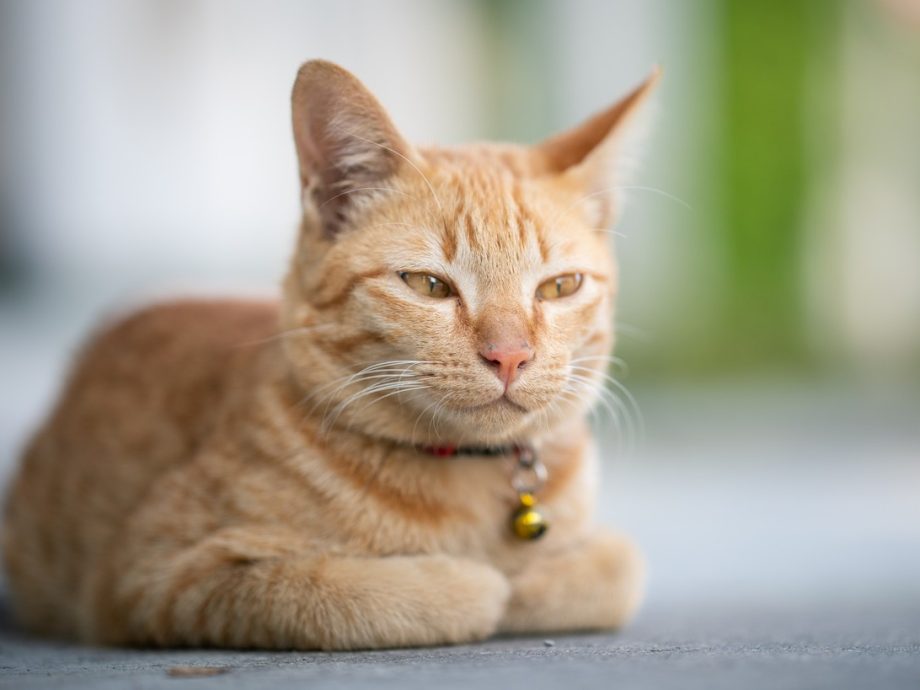Here you will find a few examples of body language that may be important to recognise on your cat to detect whether they are relaxed and happy, paying attention, or anxious and angry about something.
Neutral or relaxed
This is how your cat will remain most of the time and is how it should look in its own environment. Signs of a neutral position are: being extended, rolled, or lying on the belly with the head up and the legs under the body. Eyes can be blinking slightly or semi-closed. The ears will be relaxed in vertical position and towards the front, but they will turn to the sides if the cat hears something around. The whiskers will relax. The body should maintain a relaxed position, without tension to suggest that it is about to start an action.

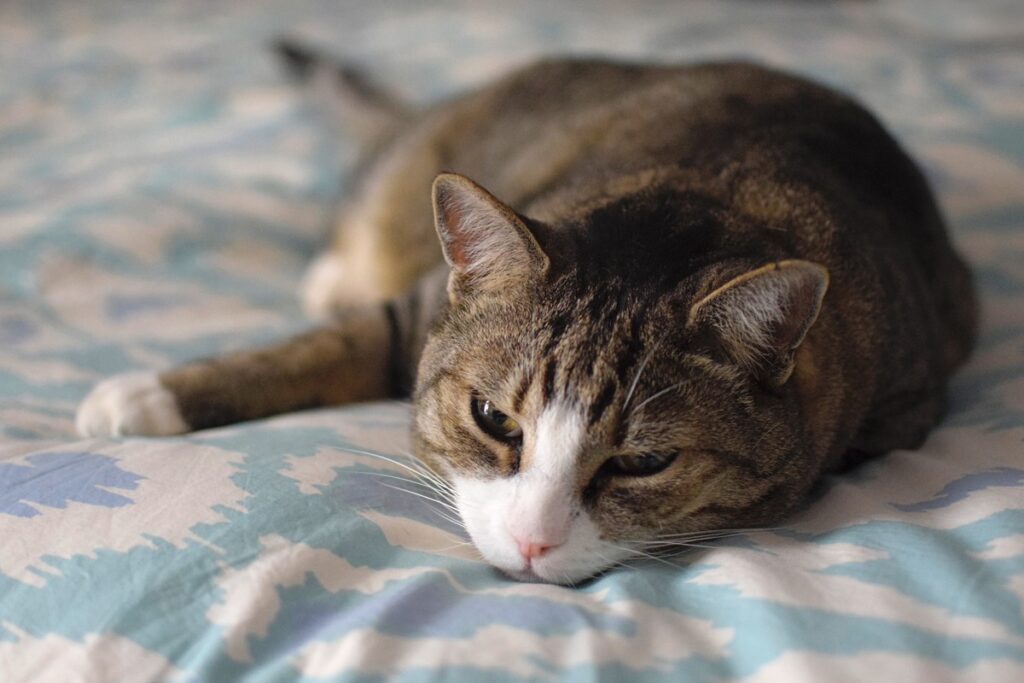
Relief and happiness
Eyes, ears, head, body, and tail will visibly relax. The whiskers will be away from the face. Some cats may yawn and close the eyes partially, or even groom themselves. They may be sitting down with the paws gathered under the body or may adopt the neutral position explained above. The cat may snooze with the eyes closed or semi opened or blinking slowly. They may also be purring.
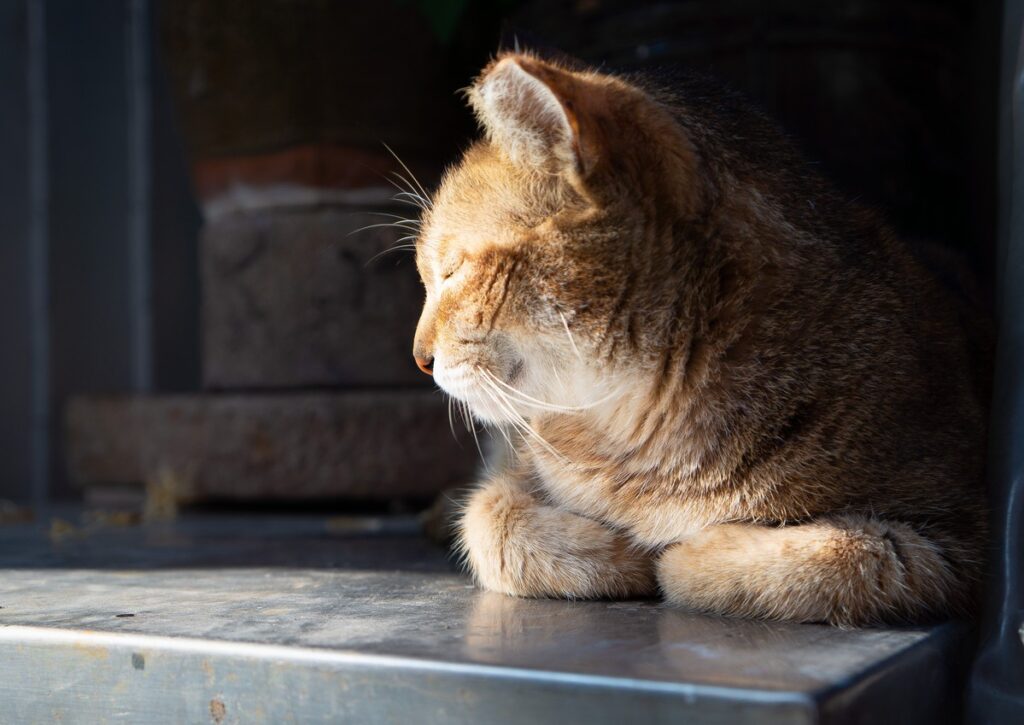
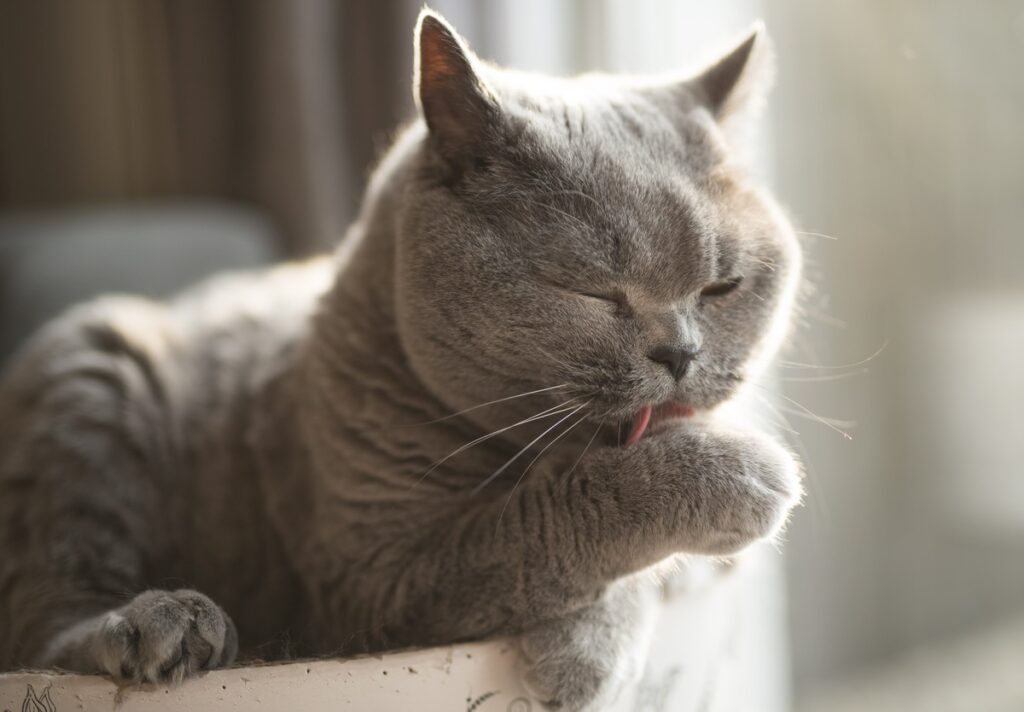
Attention
This is how your cat will be concentrated to try to decide what is the best response to a stimulus. Cats are designed to be hunters to catch prey. In this situation eyes usually open. Ears and whiskers move towards the front, with the body inclined to the centre of attention. The body will go down, the back paws will be under the body. The tail will be below the body and the tip, as well as the back end may move while the cat is getting ready to attack. If what your cat is trying to get is attention or food, may rub against you with the tail in a vertical position.
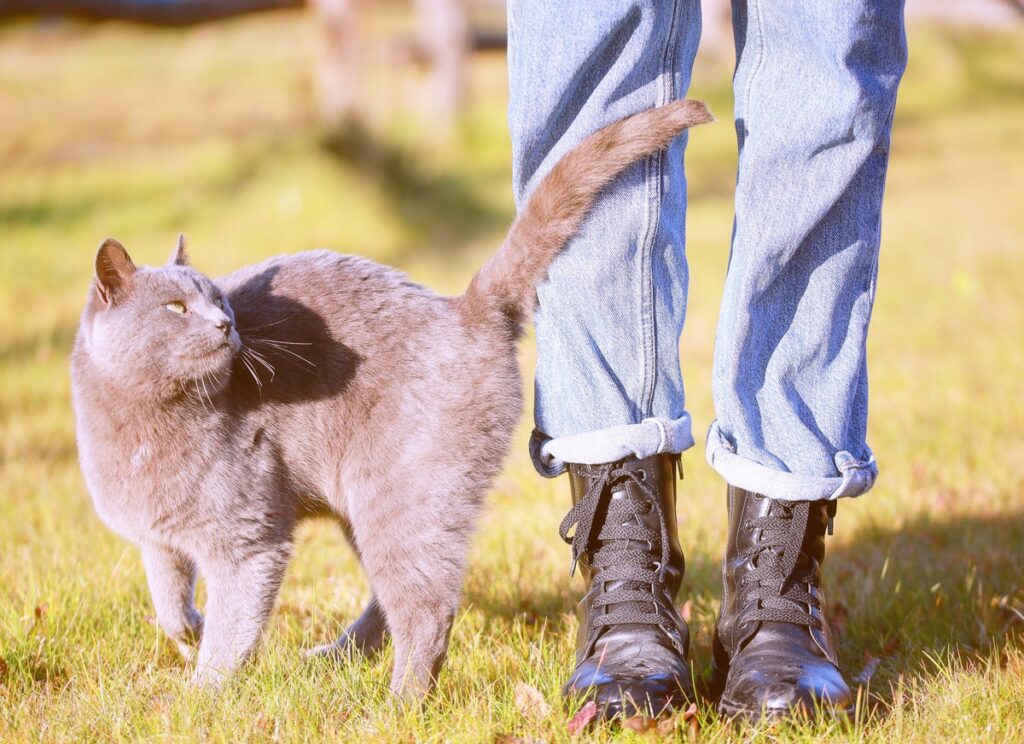
Anxiety
The cat’s eyes will be open without blinking and the pupils may be dilated. The ears may be moving around. The cat will lower the head down and the whiskers will move backwards. With this position, the cat will try to look small and harmless. The more anxious the cat is, the more will try to shrink and even arch the back to be ready to escape. The tail may be still or moving slowly from one side to another.
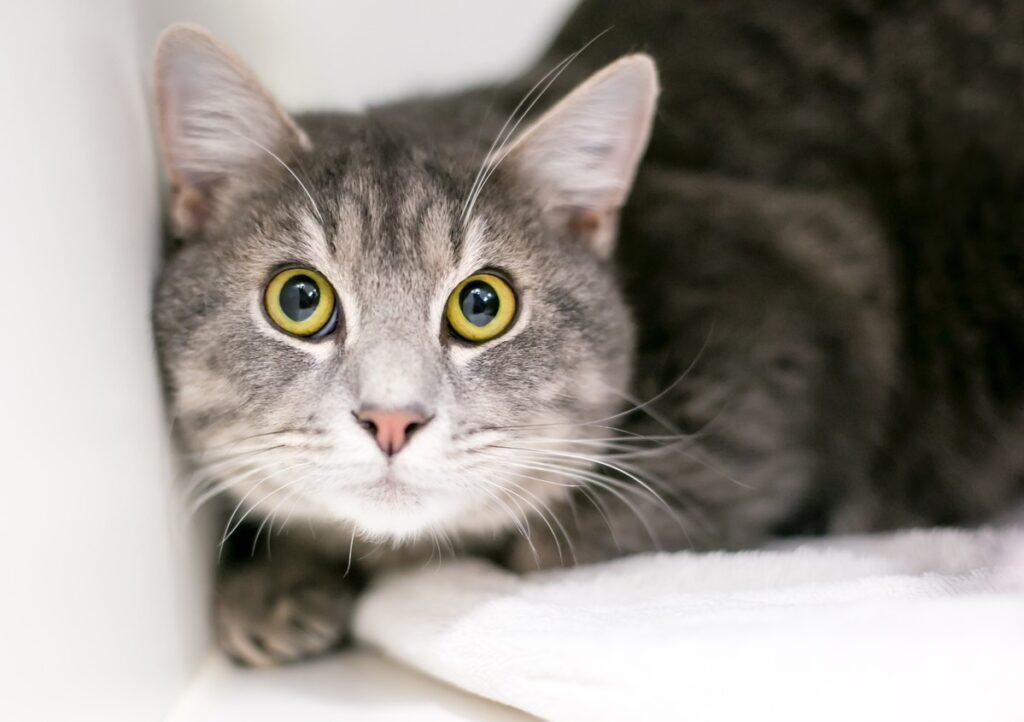
Fear or anger
The cat’s ears will move backwards, and the head may go down with the eyes looking upwards. The cat may run away or stay very still in a crouched position. The eyes will be very open with dilated pupils and the whiskers folded back. They may hiss, growl or claw. Some cats may stretch the front legs to look taller or arch the back and with the hair bristled to look bigger. The tail may be under the body or move quickly from one side to another.
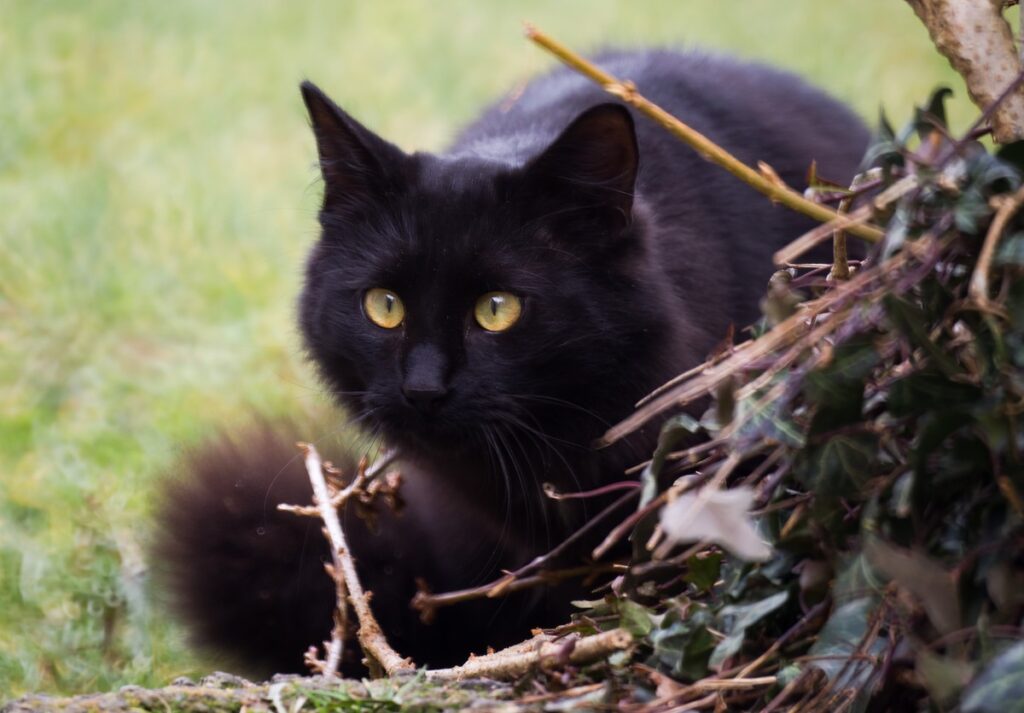
Expressions
If you are familiar with some of the expressions and gestures that your cat may show, they will help you understand how your cat is feeling. Below you will find a few examples of these expressions:
- Purring: Most of the times it means that they are happy and expressing that they are calmed, friendly and comfortable. However, sometimes purring happens when they are anticipating that they are going to be fed or stroked and it can also occur in situations of stress or pain. Therefore, purring can occur in different contexts not only when they are happy.
- Kneading: When cats are comfortable with a human, they can sit on their lap and start showing a rhythmic movement with the front paws, by pushing out and pull. This is something that has been learnt naturally by cats when they are little, they do it around the mammary glands of their mum, to stimulate the milk production. They can also do this on soft surfaces such as a blanket and when they do that, it can be to prepare the surface where they are going to lie down. They can also do it to mark the territory, as they have secreting glands in their pads.
- Rubbing: Some cats rub themselves against the owner’s legs as well as surround the legs with their tail. It is away to greet, and it can be a way to mark their territory by releasing pheromones, which are chemical molecules that are produced to communicate.
- Biting and pawing: When cats feel threatened and if for example they cannot escape, they may use these aggressive behaviours. It is also possible that cats bite as a way of playing, especially when dealing with kittens.
- Clawing: Cats claw to mark their territory by leaving pheromones. It is a normal instinctive behaviour and therefore should not be avoided. However, you can provide them with a cat scratcher.
- ‘Meow’: It is usually used by the cat to catch the owner’s attention. They may use it to catch the attention for example if they want food, or if they want to go out through a closed door. They can also use it during the heat, or when they are angry about something.
It is important that if you have any concerns with the way your cat is behaving, whether because of a change in their behaviour or because you are not sure if certain behaviour is normal, you can discuss it with your veterinary surgeon.
Certain types of behaviour e.g. aggression may be a sign of pain or stress, and an underlying medical cause could be present. Your veterinary surgeon may recommend consulting with a behaviourist or veterinary ethologist or recommend performing some diagnostic tests. They may also recommend the use of synthetic pheromones, which are available in the market, and can be used in certain situations to create a secure state in the home environment.
Causes of stress in cats
Finally, it may be important to understand that certain situations may be a cause of stress in cats. Some of these have been listed below:
- Health conditions: Certain diseases may cause discomfort and be a cause or consequence of stress. If this is the case, and especially if there are any other sign of disease e.g. respiratory, gastrointestinal, or urinary signs, book an appointment with your veterinary surgeon.
- Changes in the environment: Works in the house, moving or the arrival of a new person and in general, any change in their routine, may affect their behaviour.
- Conflict with other cats: A cat in the neighbourhood or the introduction of a new cat or other pet may cause stress. It is important to introduce any new pets progressively.
- Lack of a ‘secure’ area in the house: All cats require a secure area. For example a cardboard box may be a good hiding device, and a climbing tree may allow the cat to observe the house from a height and provide a feeling of security.
- Loud sounds: Cats have a very sensitive hearing sense and therefore fireworks or even the washing machine or a hoover may be a source of stress.

